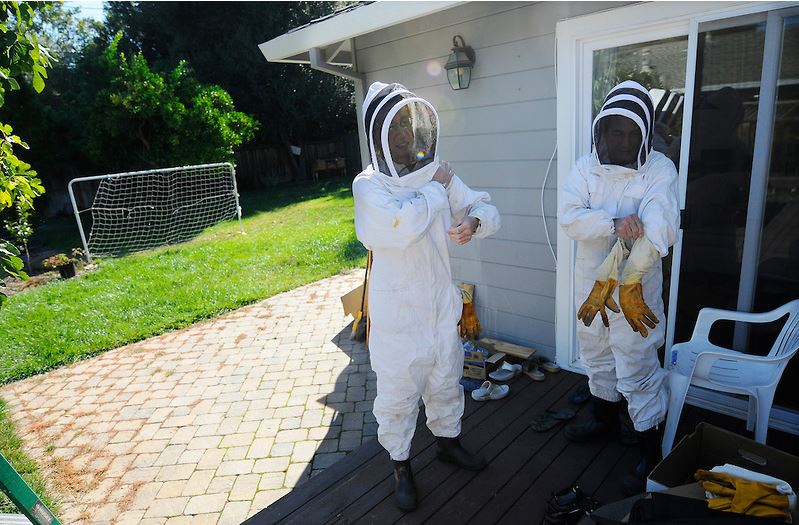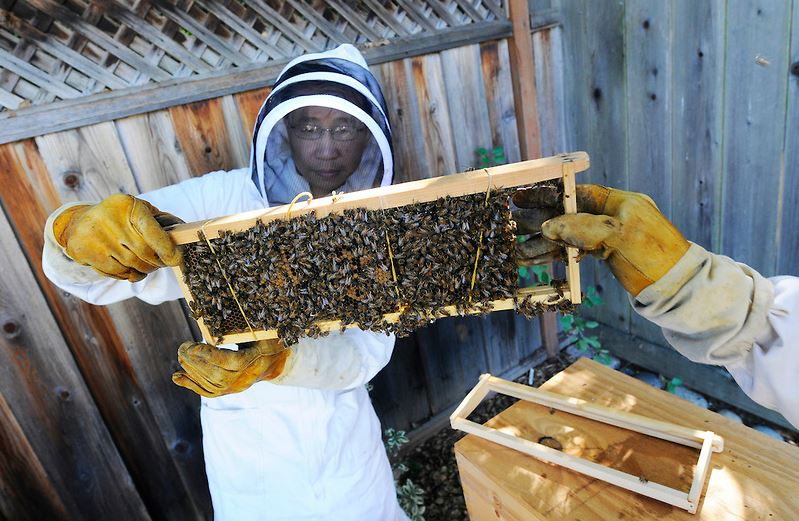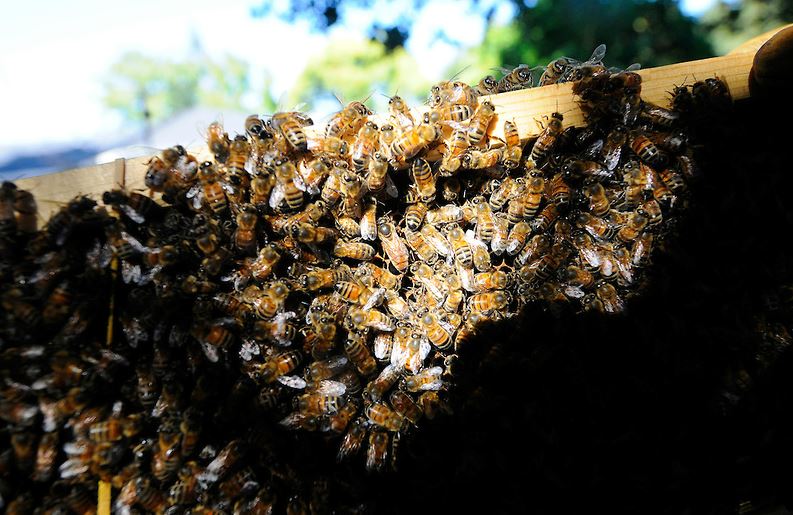A soft hum gradually intensifies to an incessant buzz as Jack Ip opens one of the wooden boxes he keeps in his Los Altos backyard.
It’s the sound of thousands of bees taking flight, wondering what’s happening to their home. The swarm grows, which for most people is the signal to get out of the way.
But instead of heading for safer ground, Ip’s eyes light up.
He’s found the queen.
“There she is,” he cries out through his beekeeper suit, pinpointing her among a cluster of the bumbling yet docile insects. “Without the queen, the bees are no good.”
Ip isn’t alone in his enthusiasm. The Los Altos resident sells hives to a growing number of Bay Area residents – several here in Los Altos and Los Altos Hills.
Some beekeepers pursue it chiefly for the sweet byproduct, others more to stave off what researchers call Colony Collapse Disorder (CCD), a national phenomenon that’s surfaced recently.
In other words, honeybees are disappearing. And no one really understands why.
Because the insects carry pollen to and from plants and flowers, the mysterious decline in their population can affect crop yields across the spectrum.




.
